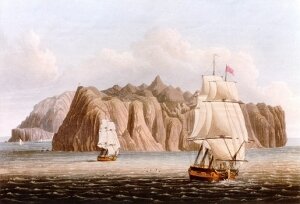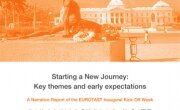MARCH 2015: Where did they come from? Using ancient DNA genome wide data to trace the ancestral origins of the freed slaves of Saint Helena
The EUROTAST fellows will be presenting the findings of their research at the upcoming Genetics/Heritage conference, 23-25 April at the International Slavery Museum in Liverpool. Deadline for registration to attend the conference is March 30th. To attend the conference, visit the Genetics/Heritage website.

Title: Where did they come from? Using ancient DNA genome wide data to trace the ancestral origins of the freed slaves of Saint Helena
Authors: Marcela Sandoval-Velasco, Maria Avila-Arcos, Andrew Pearson, Kate Robson-Brown, M. Thomas P. Gilbert, Hannes Schroeder.
Abstract: During the 19th century, at a time when the British Royal Navy was trying to impose the abolition of the transatlantic slave trade, the island of Saint Helena, located in the middle of the Atlantic Ocean, served as a liberated African Establishment where slave vessels and Africans on board were to be landed and liberated. Between 1840 and 1872, around 26,000 freed slaves were disembarked on the island, many of whom died shortly after arrival due to the appalling conditions on the ships and the living conditions on the island. Out of the total who disembarked, 8,000 are thought to have been buried on the island. Historical records suggest that the enslaved Africans came from West Central Africa, but their precise origins remain unknown. In this study, we attempt to trace the ancestral origins in Africa of 50 enslaved individuals brought to St. Helena. We generated genome-wide data from enriched ancient DNA libraries and by investigating their geographic origins we assess African population diversity during the slave trade. By tracing geographic source populations to different sub-continental modern populations within Africa we attempt to shed new light on the origins of the freed slaves of Saint Helena and the workings of the transatlantic slave trade during that time period.

